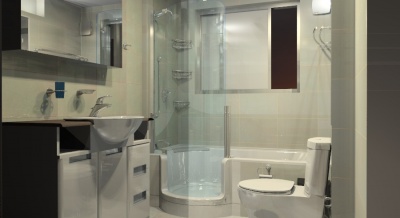How to Render Tips
We have taken some questions from our Help Desk Forum and created a more detailed response for them.
Contents
Semi-Transparent Objects
|
Recently a user on our forum asked: "I placed a semi-transparent shower curtain in my model, but it rendered like glass. What can I do to fix this?" This is because IRender nXt, by default, treats all transparent objects in SketchUp as glass which reflects light and distorts objects behind the glass. Most transparent objects in SketchUp models are glass, so the default is to render them as if they were glass. You can reduce or eliminate this effect by lowering the Index of Refraction to 1.0 |

|
Balance Interior and Exterior Lights in SketchUp
|
How to Render - Balance Interior and Exterior Lights Balancing interior and exterior lighting in SketchUp is a challenge many 3D designers face. The question of how to do it recently came up in our IRender nXt forum so we decided to cover it in a more detail. In the real world, when we look at a structure that has interior lighting, the balance of outside and inside light is effected by numerous variables. Exterior lighting is effected by the time of day, cloud cover, angle of the sun, location to other structures, exterior light fixtures, etc. Interior lighting is effected by windows that let exterior light inside, interior lamps, lights and the wattages of their bulbs. Several IRender nXt Tools offer an easy way to find the right lighting balance in withen a pre-render or post-render process. See: How to Render - Balance Interior and Exterior Lights in SketchUp |

|
Highlights and Reflections
|
Highlights and Reflections add realism and transform simple SketchUp renderings into eye-catching images. Two important things to remember with Highlights and Reflections when rendering in 3D are: (1) you’ll need to have something to reflect off of; and (2) you’ll have to apply some reflection to the objects in your rendering. First, focus on lighting. |

|
White Walls
|
Some walls in the real world aren't as "White" as we think they are. For instance, if we stood in front of a white wall with a very bright flashlight, would the beam of the flashlight be even "whiter? If it appears whiter, then the wall wasn’t really white but was only perceived as white. |

|
